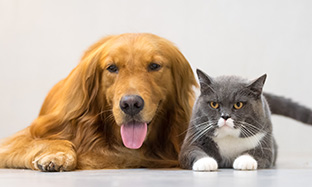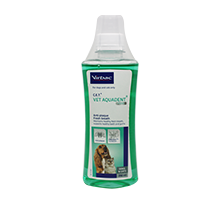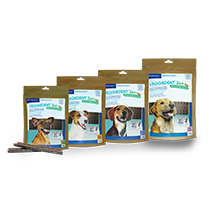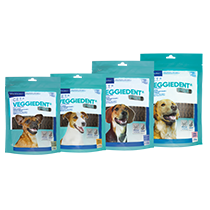
How to take care of your dog’s teeth to avoid the appearance of tartar ?
Three out of four dogs over 4 years old suffer from dental problems*. As soon as teeth come out, dental plaque is deposited on your pet’s teeth. Without specific action, your pet risks a periodontal disease with sometimes severe consquences. Dog teeth are subject to the deleterious effect of dental plaque, a bacterial biofilm deposited on the surface of the teeth and builds up between the teeth and the gums. This invisible dental plaque is formed 6 to 8 hours after a meal. Over time, it becomes mineralized and this phenomenon leads to the appearance of tartar.
Dental plaque and tartar are responsible for inflammation causing the number 1 oral disease in dogs : periodontal disease or periodontitis.
This is an attack of the supporting tissues of the tooth, meaning the gum but also the bone and the root of the rooth.
Its consequences are both local (pain, hypersalivation, bad breath, loosening of the teeth) and sometimes also general, the bacteria being disseminated by blood and potentially leading to serious problems (kidney infections, heart disease, fever…).
Taking care of your dog’s oral hygiene is therefore a necessity that requires regular brushing with dog-friendly products.
The use of specific products promoting chewing or with antibacterial actions, to add to their drinking water, is a useful supplement.
When there is too much tartar, scaling is the only solution. But this is not an insignificant act as it is performed under general anesthesia.
Moreover, even if it effectively removes the dental plaque, it does not prevent its reappearance and in the absence of additional hygiene measures, this reappearance will be inevitable.
Follow us on social media



.png)

